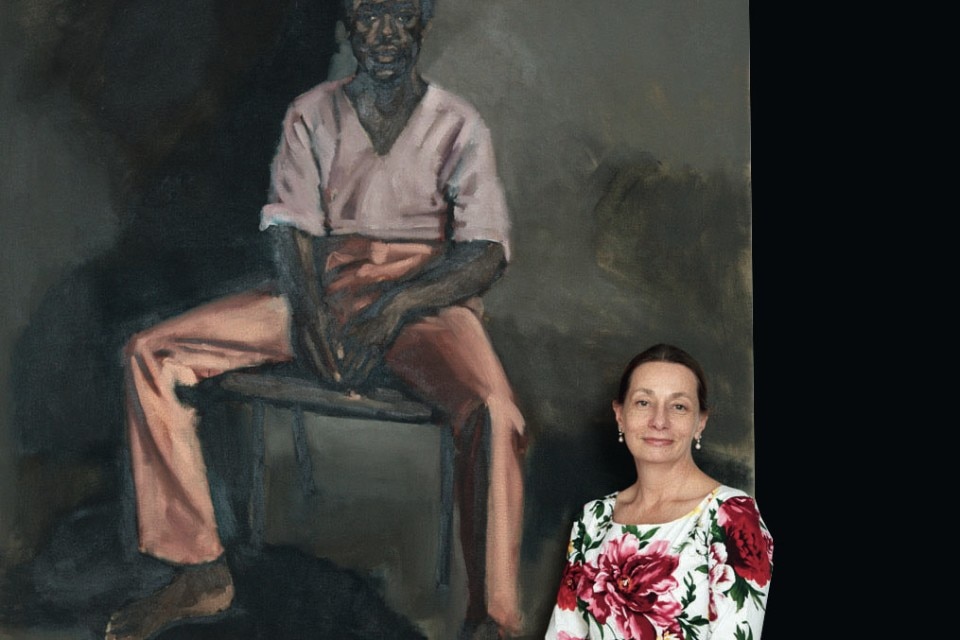Death, debt and divorce. The Covid-19 catastrophe prompted the opening words of our (virtual) coffee break with Clarice Pecori Giraldi, grand dame of a global art market that is also grappling with the pandemic. Born in Florence to Tuscan travellers, she attended 13 different schools, speaks three languages and abandoned a degree course “to go to the Belvedere and be moved by Klimt and Schiele.” The three Ds of the secondary market ended up being postponed to our goodbyes.
The art market? In theory, it’s the point where supply meets demand but in practice it’s far more than that. It’s the capacity to put a financial value on art.
She clarifies the misunderstanding that art is separate from its market, an entrenched and radical (chic) fallacy only dispelled by study, clear vision and real-world experience. “When we say work of art, we think of classical art, a painting of the Cinquecento or a Roman sculpture but it’s more complex than that as it’s an umbrella-term encompassing cars, wines, handbags, watches, jewellery and guns plus miscellaneous objects such as lace and stamps more closely associated with the craft world. That is the market, that is art.
Can all artworks be exchanged? The user-friendly ones can. The Pantheon is hard to exchange and so it’s art but not marketable.” What about contemporary art? “As commercially defined, it is the market share of works conceived and executed by living artists. Today’s artists are valued more for their invention than their skills or techniques and often address different current topics from those of 200 years ago. The question is which of today’s works will be relevant tomorrow when needs change.”
Clarice seeks a metaphor but settles for an analogy. “I still listen to the Bee Gees because I like them but my daughter makes fun of me, finding them outdated. She’s right of course. I like them but there are ever fewer of us so they get less radio playtime. It’s the same for art. Today we have Banksy who’ll still be around in 30 years’ time but others will be more in tune with the moment. Banksy is valuable today because he’s in great demand and will continue to be so but others will be in greater demand and so, more expensive.” The final stir of the coffee spoon takes us from the contemporary to the classical. As I am thinking of Aulus Gellius’s Attic Nights– the first text establishing what is classical – Clarice smiles and brings us back to reality. “The big step is when an artist stops portraying his/her own generation and language and starts portraying several generations and languages. Banksy is liked by both 20-year-olds and historicised collectors in their sixties. Like is not the right word, however. Let’s say both appreciate him. The historicisation and valorisation of art occurs when it pleases me and others, too, when it possesses something universally pleasing. Because art is also a vanity of accolade, belonging and status. If I have a Banksy lithograph above my sofa and my guests recognise it, then they have regard for me. If I post a Banksy on Instagram, those who “like” it identify with me and together we are a community. The market becomes solid when this belonging spreads beyond the Banksy generation. That is why we see a contraction of ancient art and its market. How many people today know that Saul of Tarsus fell from his horse on hearing God’s voice? That explains why art depicting the scene has a smaller market and so is worth less.” Time flies. “Studying the past isn’t fashionable anymore, even less so that of art which is no longer studied at school. This explains the decline in the classical and modern art markets and the phenomenon of social-media art critics who are replacing those of the past, who actually studied whereas today’s ones do not. Then again, such is the explosion of the art offer that it must be filtered before it reaches the collectors, galleries and museums. That is their function which they perform as best they can, with everyone free to follow them or not.”
It is impossible to part from Clarice Pecori Giraldi without asking about collecting. “Today’s buyers are not so erudite as those of previous decades. The standard buyer is less middle-class and has a more managerial profile. Some collect as a financial investment but all are also drawn to the emotional impact. It fulfils the need for works thatspeak to us. It may be a 16th-century manuscript, a Giacomelli photo or a watch but, with what is happening today, everything becomes irrelevant because everyone’s priorities have changed. That said, collecting will always be a way to build an identity to pass on.” What about the three Ds of the secondary market? “What will matter most are the debts,” smiles Clarice, “in the sense that we can use artworks as collateral for loans… although I have read that China is seeing revenge spending so after the quarantine we shall return to a different form of liquid asset. That is how I want to imagine the future.”
Clarice Pecori Giraldi In addition to a long career in the world of auction houses (Sotheby’s Italia, Christie’s Italia, Christie’s Europa and Phillips), Clarice Pecori Giraldi was also head of communication for Prada and Ferragamo as well as vice president of the Triennale. She is part of the board of directors for the Fondazione San Patrignano, curating their art collection, and is a FAI councilor.


